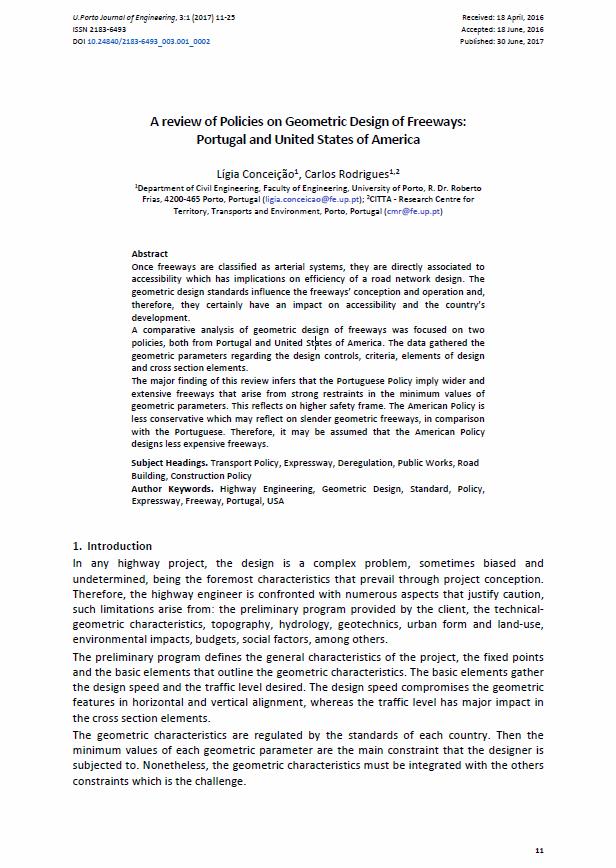A Review of Policies on Geometric Design of Freeways: Portugal and United States of America
Main Article Content
Abstract
Once freeways are classified as arterial systems, they are directly associated to accessibility which has implications on efficiency of a road network design. The geometric design standards influence the freeways’ conception and operation and, therefore, they certainly have an impact on accessibility and the country’s development.
A comparative analysis of geometric design of freeways was focused on two policies, both from Portugal and United States of America. The data gathered the geometric parameters regarding the design controls, criteria, elements of design and cross section elements.
The major finding of this review infers that the Portuguese Policy imply wider and extensive freeways that arise from strong restraints in the minimum values of geometric parameters. This reflects on higher safety frame. The American Policy is less conservative which may reflect on slender geometric freeways, in comparison with the Portuguese. Therefore, it may be assumed that the American Policy designs less expensive freeways.
Downloads
Article Details
Authors who publish with this journal agree to the following terms:
- Authors retain copyright and grant the journal right of first publication with the work simultaneously licensed under a Creative Commons Attribution License that allows others to share the work with an acknowledgement of the work's authorship and initial publication in this journal.
- Authors grant the journal the rights to provide the article in all forms and media so the article can be used on the latest technology even after publication and ensure its long-term preservation.
- Authors are able to enter into separate, additional contractual arrangements for the non-exclusive distribution of the journal's published version of the work (e.g., post it to an institutional repository or publish it in a book), with an acknowledgement of its initial publication in this journal.
- Authors are permitted and encouraged to post their work online (e.g., in institutional repositories or on their website) prior to and during the submission process, as it can lead to productive exchanges, as well as earlier and greater citation of published work (See The Effect of Open Access).

